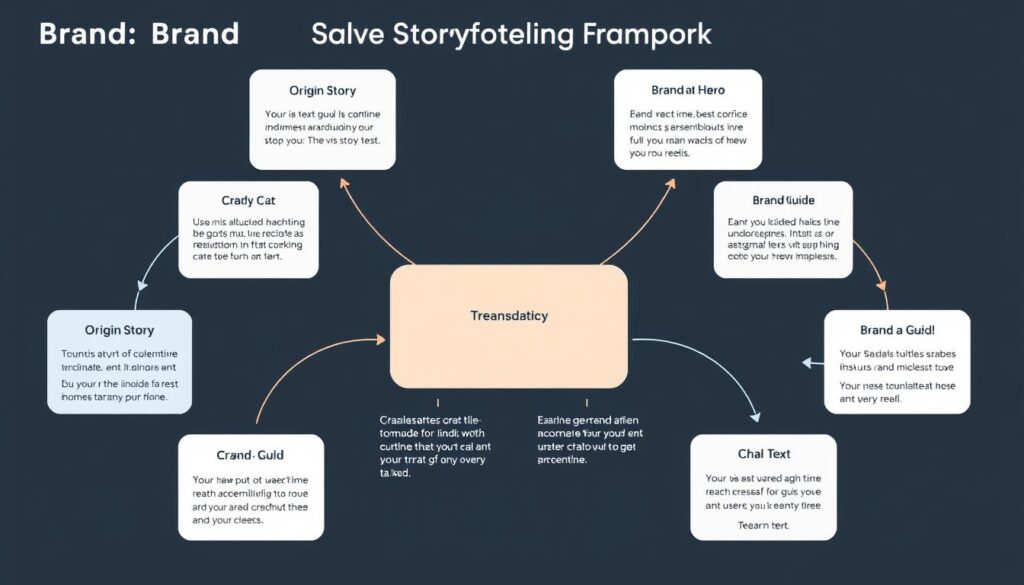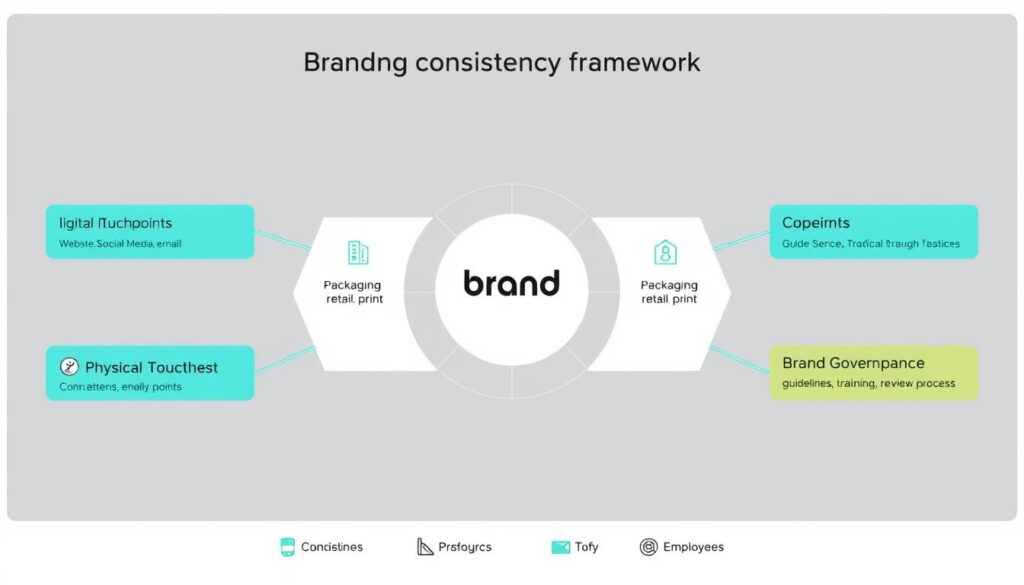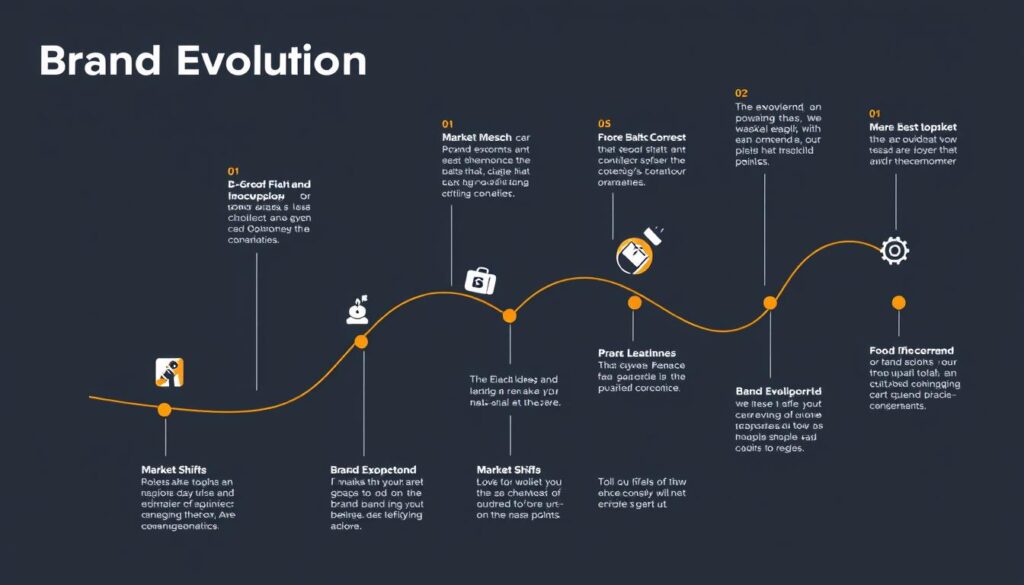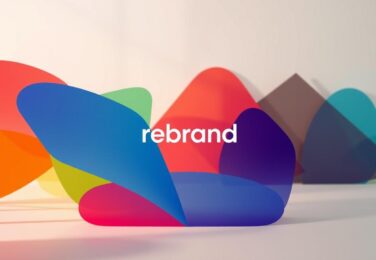Rebrand & Brand Development: Strategies for Modern Business Evolution

Table of Content
As markets evolve and consumer preferences shift, the question isn’t whether your brand should evolve—it’s how and when. This comprehensive guide explores the critical differences between rebranding and brand development, providing actionable frameworks and real-world examples to help you navigate your brand’s evolution with confidence.
Understanding Rebrand and Brand Development: Key Differences
While often used interchangeably, rebranding and brand development represent distinct strategic approaches with different objectives, scopes, and implementation timelines. Understanding these differences is crucial for determining which approach best suits your business needs.
| Aspect | Rebranding | Brand Development |
| Definition | A transformative process that changes how a brand is perceived through new visual identity, messaging, and positioning | An evolutionary process that strengthens and expands an existing brand identity over time |
| Timeframe | Typically shorter, more concentrated (3-12 months) | Ongoing, long-term strategy (continuous) |
| Scope | Often comprehensive, affecting multiple brand elements simultaneously | Can be incremental, focusing on specific aspects of the brand |
| Risk Level | Higher risk of alienating existing customers | Lower risk, more gradual evolution |
| Primary Goal | Reposition or reinvent the brand in the market | Strengthen and expand existing brand equity |
The decision between rebranding and brand development should be driven by your business objectives, market position, and the strength of your existing brand equity. In some cases, a hybrid approach may be most effective, combining elements of both strategies to achieve optimal results.
Rebranding represents transformation, while brand development focuses on evolution
When to Consider a Rebrand: 5 Telling Signs
Rebranding is a significant undertaking that requires careful consideration. Here are five indicators that your business might benefit from a comprehensive rebrand:
- Outdated Visual Identity – Your logo, colors, and overall aesthetic no longer reflect contemporary design standards or appear dated compared to competitors.
- Misaligned Brand Perception – There’s a significant gap between how you want your brand to be perceived and how your target audience actually perceives it.
- Major Business Transformation – Your company has undergone significant changes such as mergers, acquisitions, or a fundamental shift in business model or offerings.
- Market Repositioning – You’re targeting a new audience segment or entering markets that require a different brand positioning.
- Reputation Recovery – Your brand has experienced negative publicity or association that necessitates a fresh start.

“Rebranding should never be undertaken lightly or for superficial reasons. The most successful rebrands are driven by strategic necessity and executed with both boldness and respect for existing brand equity.”
The 7-Step Corporate Rebranding Process
A successful rebrand follows a structured approach that balances creativity with strategic rigor. Here’s our proven 7-step process for executing a corporate rebranding that drives business results:
- Conduct Comprehensive Research – Begin with thorough market research, competitor analysis, and stakeholder interviews to understand current brand perception and identify opportunities.
- Define Strategic Objectives – Clearly articulate what the rebrand needs to achieve and how success will be measured, ensuring alignment with broader business goals.
- Develop Brand Positioning – Create a distinctive positioning that differentiates your brand and resonates with your target audience.
- Craft Brand Identity – Design visual elements (logo, color palette, typography) and verbal elements (messaging, tone of voice) that express your new positioning.
- Create Implementation Plan – Develop a detailed rollout strategy covering all touchpoints, from digital assets to physical environments.
- Execute Internal Launch – Introduce the rebrand to employees first, ensuring they understand and can effectively represent the new brand.
- Roll Out External Launch – Strategically reveal your rebrand to the market, leveraging PR, advertising, and direct communication to maximise impact.

Audience Analysis: The Foundation of Successful Rebranding
At the heart of any effective rebrand is a deep understanding of your target audience. Beyond basic demographics, you need to uncover their values, aspirations, pain points, and how they perceive your brand relative to competitors.
Quantitative Research Methods
- Brand perception surveys
- Market segmentation analysis
- Competitive positioning studies
- Customer satisfaction metrics
Qualitative Research Methods
- In-depth customer interviews
- Focus groups with target segments
- Social listening analysis
- Customer journey mapping
Pro Tip: Don’t limit your research to current customers. Include lapsed customers, prospects who chose competitors, and aspirational customer segments to gain a complete picture of market perception.
Visual Identity Refresh: Beyond the Logo
While a logo redesign often receives the most attention in a rebrand, a comprehensive visual identity refresh encompasses multiple elements that work together to create a cohesive brand experience.

Primary Elements
- Logo and brand marks
- Color palette
- Typography system
- Iconography style
Supporting Elements
- Photography style
- Illustration approach
- Pattern and texture usage
- Motion and animation principles
Application Guidelines
- Digital implementation
- Print materials
- Environmental design
- Product packaging
A successful visual identity refresh balances innovation with recognition. Even significant changes should maintain some connection to your brand’s heritage to preserve valuable brand equity while moving the brand forward.
Messaging Alignment: Finding Your Brand Voice
Effective brand messaging translates your positioning into compelling communication that resonates with your audience. During a rebrand, messaging alignment ensures consistency across all touchpoints.

A comprehensive messaging framework typically includes:
- Brand Positioning Statement – The definitive articulation of what makes your brand unique and valuable to your target audience
- Brand Promise – The commitment your brand makes to customers
- Value Proposition – The specific benefits customers receive from choosing your brand
- Key Messages – Core themes that support your positioning across different audiences and contexts
- Tone of Voice – The distinctive way your brand expresses itself through language
- Messaging Guidelines – Rules and examples for applying your brand voice consistently
Messaging Consistency Check: After developing your messaging framework, audit all customer-facing communications to identify inconsistencies. Prioritise high-impact touchpoints like your website homepage, sales materials, and customer service scripts for immediate alignment.
Brand Development Frameworks for Long-Term Growth
While rebranding focuses on transformation, brand development is about strategic evolution. These frameworks provide structured approaches to strengthening your brand over time.
The Brand Positioning Framework
Effective positioning creates a distinctive place for your brand in the market and in consumers’ minds. This framework helps you develop positioning that drives competitive advantage.

Core Components
- Target Audience Definition – Detailed profiles of your ideal customers
- Competitive Landscape Analysis – Assessment of direct and indirect competitors
- Points of Difference – Unique attributes that set your brand apart
- Brand Promise – The value you deliver consistently
- Brand Personality – Human characteristics attributed to your brand
Implementation Steps
- Conduct market research to identify gaps and opportunities
- Define your target audience with precision
- Analyse competitor positioning strategies
- Identify meaningful differentiation points
- Articulate your brand promise
- Develop a distinctive brand personality
- Test positioning with target audience
The Brand Storytelling Framework
Compelling brand stories create emotional connections with customers and bring your positioning to life. This framework helps you craft authentic narratives that resonate with your audience.

- Origin Story – The authentic narrative of how and why your brand began
- Brand Purpose – The meaningful impact your brand seeks to make
- Customer as Hero – Positioning your customer as the protagonist of the story
- Brand as Guide – Your role in helping customers overcome challenges
- Challenges Addressed – The problems your brand solves
- Transformation Offered – The positive change customers experience
- Call to Action – The clear next step for customers to engage
“The most powerful brand stories aren’t about the brand—they’re about the customer’s journey and how the brand helps them succeed.”
The Brand Consistency Framework
Consistency builds recognition and trust over time. This framework ensures your brand is expressed coherently across all touchpoints and experiences.

Digital Touchpoints
- Website and mobile experience
- Social media presence
- Email communications
- Digital advertising
- Online customer service
Physical Touchpoints
- Product packaging
- Retail environments
- Print materials
- Office/facility design
- Events and experiences
Human Touchpoints
- Customer service interactions
- Sales presentations
- Employee communications
- Partner relationships
- Community engagement
Consistency Warning: Brand inconsistency costs businesses an estimated 10-20% in revenue due to confused messaging and eroded trust. Implement a formal brand governance process to maintain consistency as your brand evolves.
Case Studies: Successful Rebrand and Brand Development Examples
Examining real-world examples provides valuable insights into effective brand evolution strategies. Here are three notable cases that demonstrate different approaches to rebranding and brand development.
Case Study 1: Airbnb’s Transformative Rebrand

Challenge
In 2014, Airbnb had outgrown its initial positioning as a budget accommodation platform. The company needed a brand that reflected its evolved mission of creating a sense of belonging anywhere in the world.
Strategy
Airbnb undertook a comprehensive rebrand that introduced the “Bélo” symbol—representing people, places, love, and Airbnb itself. The new identity was supported by a refreshed color palette, typography, and photography style that emphasised authentic human connections.
Implementation
The rebrand was launched with a campaign that invited community participation, allowing hosts and guests to create their own versions of the Bélo symbol. This approach reinforced the brand’s community-centric positioning.
Results
The rebrand helped Airbnb transition from a transactional platform to a lifestyle brand. Within a year, brand awareness increased by 13%, and the company’s valuation doubled to $13 billion.
“The rebrand wasn’t just about a new logo—it was about creating a universal symbol of belonging that could be recognised anywhere in the world.”
Case Study 2: Old Spice’s Brand Development Revolution

Challenge
By 2010, Old Spice was perceived as an outdated brand used primarily by older men. The company needed to attract younger consumers without alienating its existing customer base.
Strategy
Rather than a complete rebrand, Old Spice pursued strategic brand development, maintaining its core identity while dramatically evolving its marketing approach. The “Smell Like a Man, Man” campaign introduced a new brand voice that was confident, humorous, and self-aware.
Implementation
The brand development strategy was executed primarily through innovative content marketing, including viral videos, social media engagement, and interactive campaigns that encouraged audience participation.
Results
Within six months, Old Spice became the #1 body wash brand for men. Sales increased by 107% in the first month after the campaign launch, and the brand successfully attracted a younger demographic while retaining its heritage customers.
Case Study 3: Burberry’s Luxury Brand Revitalisation

Challenge
By the early 2000s, Burberry’s iconic check pattern had become overexposed and associated with “chav” culture in the UK. The luxury brand needed to reclaim its premium positioning while appealing to a new generation of luxury consumers.
Strategy
Under CEO Angela Ahrendts and Creative Director Christopher Bailey, Burberry implemented a hybrid approach combining rebranding and brand development. The strategy focused on embracing digital innovation while reinforcing the brand’s British heritage and craftsmanship.
Implementation
Burberry consolidated its sub-brands, redesigned its retail experiences, and became a digital pioneer in the luxury space. The company invested heavily in immersive online experiences and was one of the first luxury brands to embrace social media and live-streamed fashion shows.
Results
Between 2006 and 2014, Burberry’s value increased from £2 billion to over £7 billion. The brand successfully repositioned itself as a modern luxury brand that appeals to both traditional luxury consumers and digitally-native millennials.
Key Takeaway: These case studies demonstrate that successful brand evolution requires a deep understanding of your brand’s equity, clear strategic objectives, and thoughtful implementation that balances innovation with heritage.
Navigating Common Rebrand and Brand Development Challenges
Even the most carefully planned brand evolution initiatives face obstacles. Understanding these common challenges and how to address them can help ensure a successful outcome.

Retaining Brand Equity During Change
One of the greatest risks in rebranding is losing the valuable associations and recognition you’ve built over time. Here’s how to preserve brand equity while evolving:
- Conduct Equity Audit – Identify which brand elements carry the most positive equity before making changes
- Evolve Strategically – Consider maintaining certain recognisable elements while updating others
- Bridge the Transition – Create messaging that connects your brand’s heritage to its future
- Phase Implementation – Consider a gradual rollout that helps customers adapt to changes
- Explain the Why – Communicate the strategic rationale behind your brand evolution
Managing Stakeholder Expectations
Brand evolution affects multiple stakeholders, each with different priorities and concerns. Effective stakeholder management is crucial for success:
Internal Stakeholders
- Leadership team
- Employees
- Board members
- Investors
Focus on business rationale, implementation support, and role in representing the brand
External Stakeholders
- Customers
- Partners
- Suppliers
- Media
Emphasise benefits, continuity of relationships, and enhanced value proposition
Engagement Strategies
- Tailored communications
- Preview sessions
- Feedback mechanisms
- Implementation toolkits
Provide appropriate level of involvement based on impact and influence
Stakeholder Mapping Tip: Create a stakeholder matrix that plots each group according to their level of influence and the degree to which they’ll be impacted by the brand evolution. This helps prioritise engagement efforts and customise communication approaches.
Ensuring Consistent Implementation
The effectiveness of your brand evolution depends largely on consistent implementation across all touchpoints. Here’s how to maintain consistency:
Implementation Challenges
- Decentralised teams and locations
- Third-party partners and channels
- Legacy materials and systems
- Budget and resource constraints
- Timeline management
Solutions
- Comprehensive brand guidelines
- Digital asset management system
- Implementation prioritisation framework
- Training and certification programs
- Regular compliance audits
Implementation Warning: The most common point of failure in brand evolution initiatives is inconsistent execution. Invest in proper tools, training, and governance to ensure your new or evolved brand is expressed consistently across all touchpoints.
Future-Proofing Your Brand: Evolution Strategies for Changing Markets
In today’s rapidly changing business environment, brands must be built with adaptability in mind. These strategies will help you create a brand that can evolve effectively as markets and consumer preferences change.

Build Flexibility Into Your Brand Architecture
A flexible brand architecture allows your brand to expand into new categories, markets, and customer segments without requiring a complete rebrand.
- Modular Brand Systems – Create brand elements that can be reconfigured for different contexts while maintaining recognition
- Scalable Visual Identity – Design visual systems that work across various media and sizes, from app icons to billboards
- Extensible Naming Conventions – Develop naming frameworks that accommodate new products, services, or sub-brands
- Adaptable Brand Voice – Create messaging guidelines that can flex for different audiences while maintaining core personality
Embrace Digital-First Brand Expression
As consumer interactions increasingly occur in digital environments, brands must be designed to thrive in these contexts.
Digital-First Considerations
- Motion and animation principles
- Interactive brand experiences
- Responsive design systems
- Voice and conversational interfaces
- Augmented and virtual reality applications
Implementation Approaches
- Design systems that scale across platforms
- Create brand assets optimised for digital use
- Develop guidelines for emerging technologies
- Build modular content frameworks
- Establish digital-specific brand metrics
Implement Continuous Brand Monitoring
Rather than waiting for problems to emerge, proactively monitor your brand’s health and perception to identify evolution opportunities early.

- Regular Brand Tracking Studies – Measure key brand metrics quarterly or bi-annually to identify trends
- Social Listening Programs – Monitor online conversations about your brand and competitors
- Customer Feedback Integration – Systematically collect and analyse customer input about your brand
- Competitor Brand Analysis – Track how competitor brands are evolving and positioning themselves
- Cultural Trend Monitoring – Identify emerging cultural shifts that may impact your brand’s relevance
“The most resilient brands aren’t those that perfectly predict the future—they’re the ones built with the flexibility to adapt as the future unfolds.”
Create a Brand Innovation Pipeline
Establish a structured process for exploring brand evolution opportunities before they become urgent necessities.
Horizon 1: Optimisation
Continuous improvements to current brand expression and experience
- Refining existing touchpoints
- Addressing inconsistencies
- Enhancing current platforms
Horizon 2: Extension
Strategic extensions of your brand into adjacent spaces
- New audience segments
- Category expansions
- Channel innovations
Horizon 3: Transformation
Exploratory initiatives that may reshape your brand’s future
- Emerging technologies
- Disruptive business models
- Cultural paradigm shifts
Conclusion: Evolving Your Brand with Purpose and Precision
Whether undertaking a comprehensive rebrand or implementing strategic brand development initiatives, the key to success lies in purposeful evolution guided by customer insights and business objectives. The most effective brand evolutions balance innovation with heritage, creating distinctive identities that resonate with target audiences while building on existing brand equity.
By understanding the fundamental differences between rebranding and brand development, you can choose the approach that best suits your specific situation. With careful planning, stakeholder engagement, and consistent implementation, your brand can successfully navigate change and emerge stronger, more relevant, and better positioned for future growth.
Remember that brand evolution is not a one-time event but an ongoing process. The most successful brands continuously monitor market conditions, customer preferences, and competitive dynamics, making strategic adjustments to maintain relevance and strengthen connections with their audiences.

As you embark on your own brand evolution journey, focus on creating meaningful differentiation, delivering consistent experiences, and building emotional connections with your audience. With these foundations in place, your brand will be well-positioned to thrive in today’s dynamic business environment and adapt to whatever changes the future may bring.
Free Brand Evolution Assessment Tool
Uncertain if you need a rebrand or brand development? Our assessment tool helps you evaluate your current brand position and identify the most effective path forward. Get actionable insights tailored to your specific situation.
Expert Brand Messaging Workshop
Struggling to articulate what makes your brand unique? Our messaging workshop helps you develop a compelling brand voice that resonates with your target audience and differentiates you from competitors.
Brand Consistency Audit
Is your brand consistently represented across all touchpoints? Our comprehensive audit identifies inconsistencies and provides actionable recommendations to strengthen your brand presence.
Brand Implementation Roadmap
Need help planning your brand rollout? Our implementation roadmap template helps you prioritize touchpoints, allocate resources effectively, and ensure consistent execution across your organization.
Ready to Evolve Your Brand?
Our brand strategy experts can help you navigate the complexities of rebranding and brand development. Schedule a consultation to discuss your specific challenges and opportunities.










